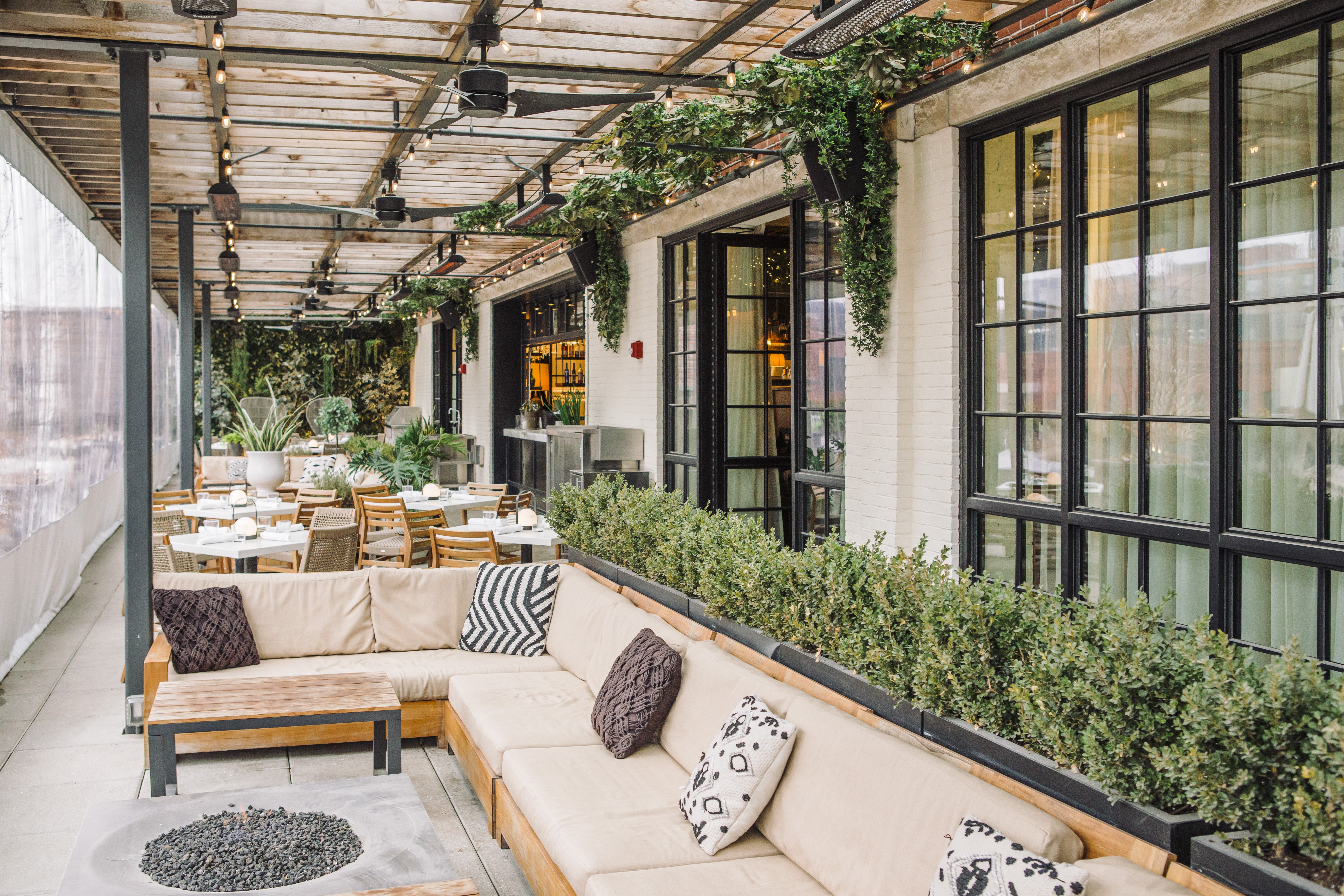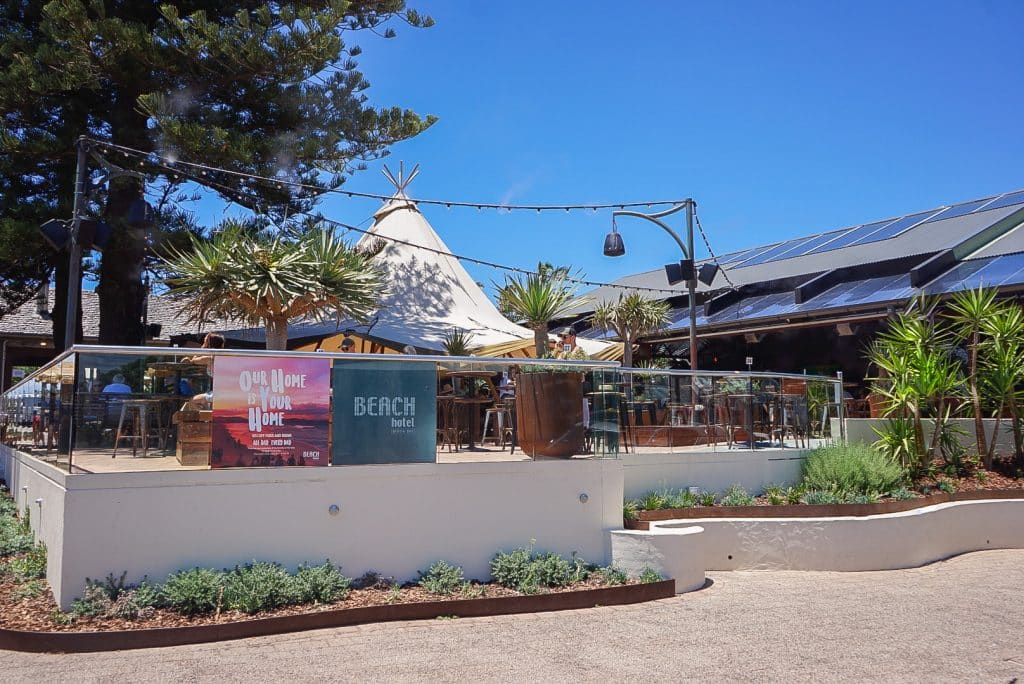
The pandemic shook the restaurant industry in many ways, forcing operators to rethink just about every way they conducted business. With dining rooms in the US around the country functioning at less than 50% capacity (and sometimes much less) for a good majority of the year, restaurants were forced to serve diners in a new capacity.
For many, outdoor seating capacities exceeded indoors for a good majority of the year. So, instead of thinking of outdoor dining as a nice-to-have feature in the warmer months, it became a part of any restaurant’s dining strategy. Many major cities amended their al-fresco dining regulations – closing off streets so restaurants can expand outdoor dining into the streets. Some cities also allowed for restaurants to expand in front of vacant storefronts, into parking lots and other unused public spaces. Flexibility was a key element this year and will continue to be.
“Everything we do moving forward in the business has to be engineered to be flexible,” says Arlene Spiegel FCSI, founder and president of Arlene Spiegel and Associates. “That pop-up mentality – where things can be easily taken up, put down, expanded or changed.”
This year certainly tested that theory and restaurants that were able to adapt, survived. We spoke with operators and consultants about this new wave of outdoor dining and what they think it might look like moving forward.
Outdoor dining room
This year became less about having a patio and more about getting creative to serve patrons while their dining room was closed entirely or at limited capacity. It also meant creating an environment where guests felt comfortable dining outside, even in cold temperatures or on rainy evenings. Matching the aesthetic that people associated with that restaurant was important too.
“It was important to the team to ensure that all aspects of the patios and greenhouses matched the brand aesthetic for each restaurant, everything from the wood tones chosen to the table settings,” explains Jerrod Melman, executive partner of Lettuce Entertain You Enterprises, a restaurant group with more than 120 locations across nine states, primarily in Chicago and the surrounding suburbs. “For example, RPM Seafood is known for its view, so we used a clear plexiglass for the private greenhouses to give our guests a view of the river, while at Sushi-San, the greenhouses are set on a busier street, so we used a less transparent material,” he says. “At Bub City in River North, we wanted to emulate the social vibe of the restaurant and carry that outside, which we did by using high tables, bringing TVs outside and incorporating the barrels as décor.”
But a venture like this is expensive, as Ellen Yin, founder and co-owner of High Street Hospitality Group with locations in Philadelphia and New York, discovered.
“It was necessary – we couldn’t survive without making the investment,” she says. One of her restaurants, Fork, was upscale, and therefore they needed to make sure the outdoor dining matched that aesthetic.
Investments don’t have to come all at once – outdoor seating with heaters, followed by tents, and then more of a structure. Many created experiences that could be flexible – being able to open windows or remove doors if necessary.
Melman took that approach with Lettuce Entertain You Enterprises, first renting tents and then having their internal construction team build individual greenhouses and structures as they saw more people were engaging in outdoor dining and often preferred having more of a private structure.
Some others got really creative. Paul Bartlett FCSI, a consultant with Kitchen Solutions in Baltimore, Maryland, helped a local restaurant, Café Hon, relocate its oyster bar into an adjacent alley. Although they weren’t sure how it would go, it ended up being a huge success.
Reservation system Resy partnered with American Express and 13 restaurants across the US to create yurt villages, tents that were professionally interior decorated to make it feel like a true experience.
“Guests will give you some grace outside,” says Spiegel, “but they still expect great service, great food and great ambience.”
Necessary changes
Outdoor dining doesn’t come without some unforeseen challenges like the distance servers need to walk (especially now with a full dining room and some outdoor spaces being in parking lots or in front of neighboring vacant storefronts). That also has an impact on menus as it’s more difficult to maintain temperatures of certain dishes and often times diners eating outside want different options.
“If something is overly fussy it will be cold on the plate before it gets through the dining room,” says Yin. “When the temperatures outside are cold, people lean towards really hot, comforting foods.”
Bartlett expects to see different techniques appear on those menus, “more pickling, curing – things that work outside no matter what time of year.”
Many restaurants also had to reorganize their flow of traffic, add QR codes for diners to view menus and add outdoor service stations to make it easier on servers.
Spiegel compares it to a “football coach who has to have many plays at the ready.”
Here to stay?
Many cities have committed to an investment in outdoor dining at least for the duration of 2021, but what happens after that? Bartlett thinks it could be here to stay. He points to ski towns that have outdoor winter dining even in snowy conditions.
Many cite Europe as an example with Parisian cafes dotting the streets. “I think people like the novelty of it all,” says Melman.
Although he doesn’t know what year- round outdoor dining may look like for Lettuce Entertain You in the future, he thinks there will be some capacity for pop-up experiences at certain locations. “The pandemic has certainly stretched our creativity,” he says.
Spiegel has seen an added benefit – smaller restaurants that usually go unnoticed by pedestrians now have a street presence. “It’s like free marketing for them,” she says.
Year-round outdoor dining also helps with a larger urban planning initiative. “We as a society are reviewing the role of cars in cities, more bike lanes, less cars,” says Bartlett. “The pandemic is causing change to happen faster than otherwise would have happened. New street spaces are better for communities.”
Samantha Lande
Please note: This article was first published in Foodservice Consultant‘s Q2 2021 edition. This topic is one that is constantly updating, so some details and legislation may have changed since initial publication.




